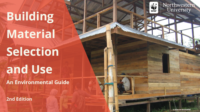An open-source database of 100 common building materials, which is now available to the public free of charge, lists the materials’ ingredients and their potential harmful threat to human health and the environment.
Flux, a San Francisco technology company that came out of Google X labs, officially announced the Quartz database of building materials at Verge 2015, a sustainability conference that was held from Oct. 26-29 in San Jose, Calif. Flux’s aim is to provide the product database not only for the public but also for builders and occupants, says Jim Vallette, research director, Healthy Building Network (HBN), Washington, D.C. To create Quartz, the non-profit HBN partnered with Flux, Google Inc. and Thinkstep, a sustainability software developer based in Stuttgart, Germany.
“Our dream at HBN was to get to a fundamental understanding of building materials from stem to stern,” says Vallette. “To have 100 common product profiles as open data for use by anybody is a huge contribution. It provides a baseline road map for material changes to continue the industry’s arc toward sustainability.”
Designed like a nutrition label on a cereal box, the database breaks down the ingredients in building materials. But, for the database, the ingredients weren’t always easy to ascertain, says Vallette.
“A lot of manufacturers said the composition of key building materials was proprietary,” says Vallette, adding that HBN has experience exploring some of the undisclosed components of building products. HBN has been pushing the transparency movement within green building since, in 2009, its so-called Pharos Project started evaluating the material composition of building products against 60 health and environmental hazards, he says.
“The problem is that manufacturers only go to a certain degree of disclosure, so we’ve gone to [the patents themselves] and other forms of deep research to find out if carcinogens are present in these substances—sometimes in the parts per billion,” observes Vallette.
Quartz’s Common Product Profiles (CPP) describe the composition of 100 generic, non-manufacturer-specific products. Each product undergoes a screening for health hazards, and each profile describes the human health impacts of that product. Drilling down further, Quartz also can show the percentages of each hazardous material in a given product. This information is compiled for Quartz by HBN through the Pharos Project database. Every CPP also has an ISO 14040 life-cycle assessment, which is an analysis of the environmental impact of the product.
“It brings accountability and credibility to our process of building structures, and it’s exciting to see Google venture into this arena,” says Donald Davies, senior principal at structural engineer Magnusson Klemencic Associates, Seattle. “Life-cycle analysis is right on the edge of getting some real legs behind it.” Magnusson Klemencic is not connected with Flux, but it published a book separately on the topic of building life-cycle analysis, Davies adds.
Noting Google’s mission to provide data management and open-source information, Davies observes that the Quartz project is an example of the company pursuing life-cycle analysis. “There’s not a lot of that in the [construction] industry, and we need more of it,” says Davies.
The upcoming LEED v4 will be introducing life-cycle analysis for some materials and resource credits, says Davies. “It’s highly controversial for LEED v4 to come out because manufacturers don’t want to report data on proprietary materials makeups,” Davies says. “I think the reason that LEED v4 hasn’t come out yet is because of life-cycle analysis.”
Google’s investment in Quartz is a sign that life-cycle analysis is gaining momentum. The industry should listen.




Post a comment to this article
Report Abusive Comment